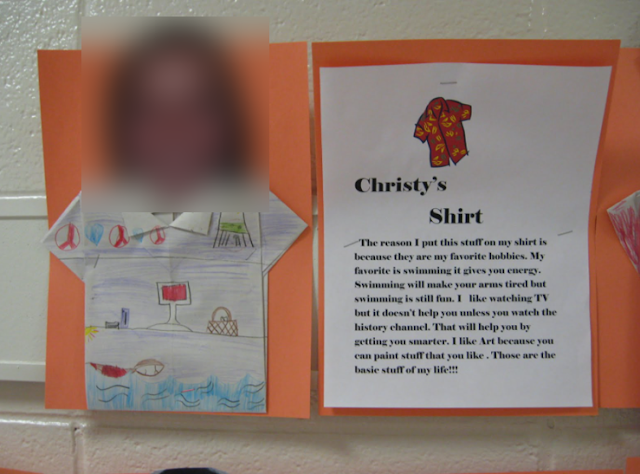This class made origami t-shirts that they then decorated with items that represented themselves. They wrote about the decorations and how they fit into their lives in the computer lab (using Microsoft Word). The teacher took pictures of their heads and they were cut to fit the t-shirts.
I really liked this project. For this class it was a beginning of the year project but I could easily do it with a Social Studies or Science class. I would change the instructions to read: "Create t-shirt designs that match an event in history. Write about how your drawings match what we've studied in social studies."
The instructions for making the origami shirt can be followed from this Activity TV site.

Comments